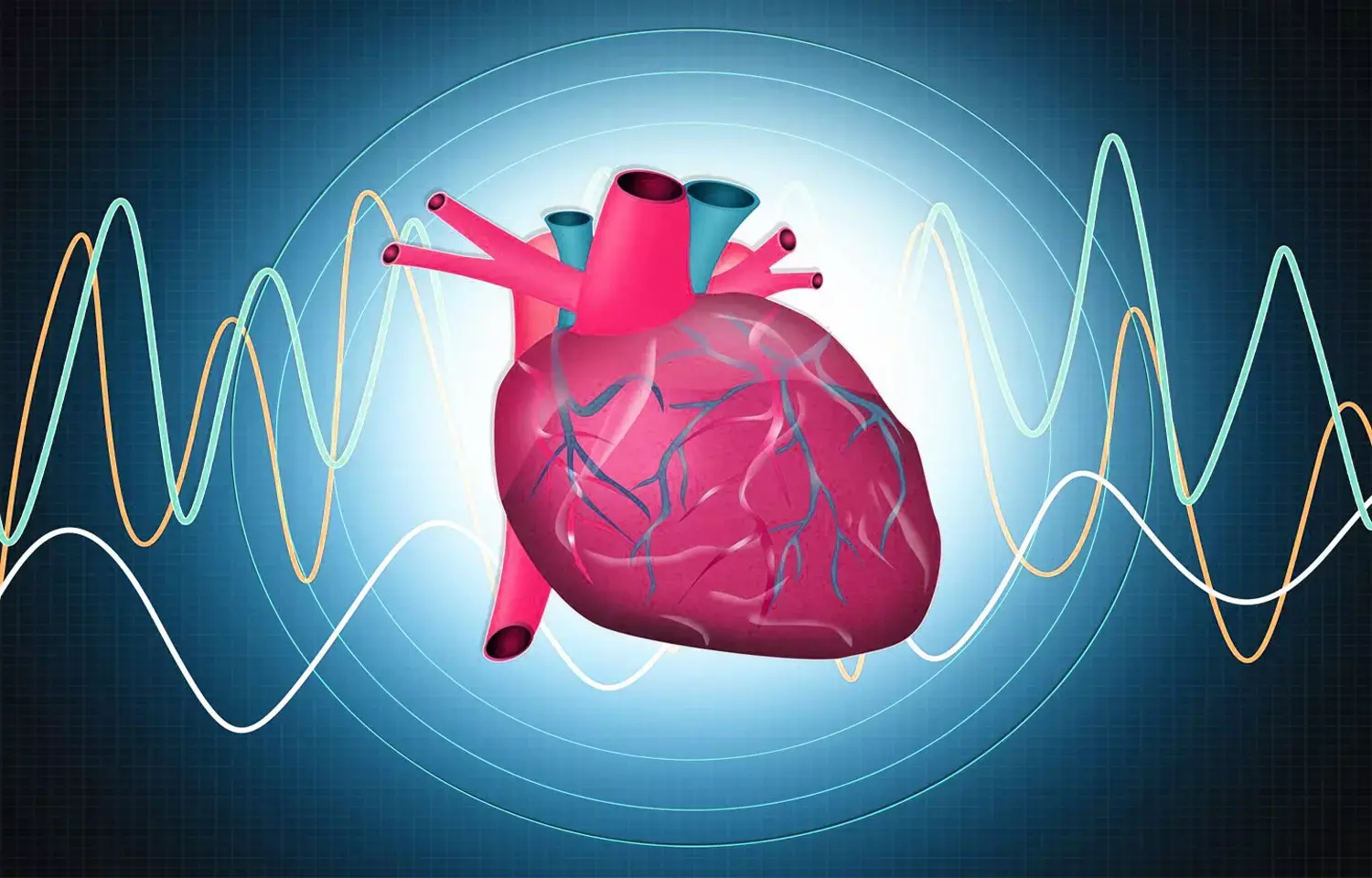- Home
- Medical news & Guidelines
- Anesthesiology
- Cardiology and CTVS
- Critical Care
- Dentistry
- Dermatology
- Diabetes and Endocrinology
- ENT
- Gastroenterology
- Medicine
- Nephrology
- Neurology
- Obstretics-Gynaecology
- Oncology
- Ophthalmology
- Orthopaedics
- Pediatrics-Neonatology
- Psychiatry
- Pulmonology
- Radiology
- Surgery
- Urology
- Laboratory Medicine
- Diet
- Nursing
- Paramedical
- Physiotherapy
- Health news
- Fact Check
- Bone Health Fact Check
- Brain Health Fact Check
- Cancer Related Fact Check
- Child Care Fact Check
- Dental and oral health fact check
- Diabetes and metabolic health fact check
- Diet and Nutrition Fact Check
- Eye and ENT Care Fact Check
- Fitness fact check
- Gut health fact check
- Heart health fact check
- Kidney health fact check
- Medical education fact check
- Men's health fact check
- Respiratory fact check
- Skin and hair care fact check
- Vaccine and Immunization fact check
- Women's health fact check
- AYUSH
- State News
- Andaman and Nicobar Islands
- Andhra Pradesh
- Arunachal Pradesh
- Assam
- Bihar
- Chandigarh
- Chattisgarh
- Dadra and Nagar Haveli
- Daman and Diu
- Delhi
- Goa
- Gujarat
- Haryana
- Himachal Pradesh
- Jammu & Kashmir
- Jharkhand
- Karnataka
- Kerala
- Ladakh
- Lakshadweep
- Madhya Pradesh
- Maharashtra
- Manipur
- Meghalaya
- Mizoram
- Nagaland
- Odisha
- Puducherry
- Punjab
- Rajasthan
- Sikkim
- Tamil Nadu
- Telangana
- Tripura
- Uttar Pradesh
- Uttrakhand
- West Bengal
- Medical Education
- Industry
Edema index may predict Cardiorespiratory Fitness in Heart Failure Patients With Diabetes: Study

CAPTION
Novel biomarkers predict the development of incident heart failure.
CREDIT
MostPhotos/Rossella Apostoli.
Aaccording to research findings, edema index was determined to be a good predictor index in cardiorespiratory fitness in heart failure patients,specially with reduced ejection fraction and type 2 diabetes mellitus.
Bioelectric impedance analysis-measured edema index (EI) is a feasible, non-invasive technique for measuring fluid overload. EI is an independent predictor of cardiorespiratory fitness in heart failure patients with reduced ejection fraction and type 2 diabetes mellitus. One of the prominent features of heart failure (HF) is fluid overload, which is difficult to measure in a noninvasive manner. However, the edema index (EI), a surrogate for extracellular volume status, can be estimated with bioelectrical impedance analysis.
In this cross‐sectional analysis, Researchers investigated whether EI predicts cardiorespiratory fitness (CRF) in patients with HF with reduced ejection fraction (EF) and type 2 diabetes mellitus, and hypothesized that greater EI would predict reduced CRF.
For the study design, researchers prospectively collected data on stable patients with symptomatic HF with reduced EF (New York Heart Association class II–III; left ventricular EF <50%) and type 2 diabetes mellitus. We measured peak oxygen consumption (VO2), a measure of CRF, and exercise time, a measure of functional capacity, during maximal cardiopulmonary exercise testing.3 EI was measured with single‐frequency bioelectrical impedance analysis (RJL System, Inc, Clinton Township, MI) by dividing the percentage of extracellular water by total body water. Subjects underwent venipuncture to measure serum creatinine, CRP (C‐reactive protein), hemoglobin, NT‐proBNP (N‐terminal pro‐B‐type natriuretic peptide), and sodium. Health‐related quality of life was assessed using the Minnesota Living With HF Questionnaire.
Data analysis revealed the following facts.
- EI was positively associated with BMI (ρ=0.388; P=0.001) and negatively associated with age, serum creatinine, and hemoglobin (ρ=−0.239, P=0.040; ρ=−0.296, P=0.011; and ρ=−0.329, P=0.004, respectively).
- EI was inversely associated with peak VO2 and exercise time (Figure). EI was also inversely associated with the ventilatory anaerobic threshold (ρ=−0.309; P=0.008) and O2 pulse (ρ=−0.308; P=0.008), but not significantly with minute ventilation/carbon dioxide production slope (ρ=−0.091; P=0.440) nor respiratory exchange ratio (ρ=−0.009; P=0.941).
- Increased BMI, NT‐proBNP, and Minnesota Living With HF Questionnaire score, and lower hemoglobin levels, were also associated with lower peak VO2 (ρ=−0.353, P=0.002; ρ=−0.318, P=0.006; ρ=−0.248, P=0.035; and ρ=0.288, P=0.014, respectively.
- Men demonstrated a higher median EI than their female counterparts (p = .013) and Black participants had significantly greater EI than White participants (p = .020).
"In this study, we showed for the first time that bioelectrical impedance analysis–measured EI, which reflects increased extracellular volume, serves as an independent predictor of CRF in patients with HF with reduced EF and type 2 diabetes mellitus. Greater EI was also associated with worse functional capacity (ie, exercise time)."the team concluded.
For full article follow the link; https://doi.org/10.1161/JAHA.120.018631
Primary source: Journal of the American Heart Association
Dr Satabdi Saha (BDS, MDS) is a practicing pediatric dentist with a keen interest in new medical researches and updates. She has completed her BDS from North Bengal Dental College ,Darjeeling. Then she went on to secure an ALL INDIA NEET PG rank and completed her MDS from the first dental college in the country – Dr R. Ahmed Dental College and Hospital. She is currently attached to The Marwari Relief Society Hospital as a consultant along with private practice of 2 years. She has published scientific papers in national and international journals. Her strong passion of sharing knowledge with the medical fraternity has motivated her to be a part of Medical Dialogues.
Dr Kamal Kant Kohli-MBBS, DTCD- a chest specialist with more than 30 years of practice and a flair for writing clinical articles, Dr Kamal Kant Kohli joined Medical Dialogues as a Chief Editor of Medical News. Besides writing articles, as an editor, he proofreads and verifies all the medical content published on Medical Dialogues including those coming from journals, studies,medical conferences,guidelines etc. Email: drkohli@medicaldialogues.in. Contact no. 011-43720751


